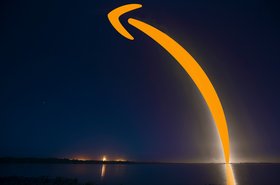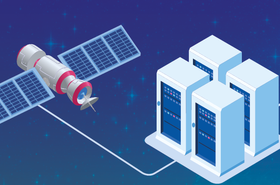Next-generation Low Earth Orbit (LEO) satellite services being built by OneWeb, SpaceX, Telesat, and LeoSat say they will deliver services as good or better than existing fiber connections. Such services will hands-down beat offerings from existing Geosynchronous Earth Orbit (GEO) satellites, but it will be a while before we see a head-to-head comparison between LEO connectivity and terrestrial alternatives.
OneWeb’s founder and chairman Greg Wyler posted data of its initial speed tests on July 11, with the company dropping a formal press release and a fancy video on July 16. Connectivity testing took place in Seoul, South Korea in partnership with mobile satellite communications systems manufacturer Intellian and ground terminal equipment supplier SatixFy using OneWeb’s six in-orbit production satellites.
Initial speeds of over 350 Mbps with ping times between 29 to 32 milliseconds were demonstrated, with some “minimal optimization” resulting in speeds of over 400 Mbps, Wyler said. He believes 1 Gbps speeds are “achievable,” which would blow past the 500 Mbps speed benchmark suggested in initial OneWeb discussions.
Numerous competitors
Delivering gigabit speeds would put OneWeb into the same broadband category as SpaceX’s Starlink, Telesat, and LeoSat, with LeoSat saying it could offer its enterprise customers up to 10 Gbps or faster, but companies need to go beyond marketing statement and into demonstrating services in order to gain traction in the marketplace.
SpaceX is likely to put performance numbers on the table in the near-term, given it has 55 operational satellites from its first launch in June.
Founder and CEO Elon Musk has said Starlink could be faster than existing terrestrial fiber connections by using intra-satellite optical links to avoid delays introduced by multiple network hops and the physical medium of glass, but the first-generation satellites launched in June didn’t include such optical kit.
Until the next generation of satellites add optical links, Starlink network traffic will have to be routed through a ground station – “ground bounce” as Musk called it – if it needs to move between different satellite coverage area. Such bounces add latency, so Starlink is unlikely to live up to its faster-than-fiber representations initially and may be on par with OneWeb in the latency department from a network perspective.
If SpaceX conducts six Starlink launches by the end of the year, it should have enough satellites in orbit to offer regional service to Canada and the Northern United States, while OneWeb expects to have enough satellites in space to conduct customer tests in 2020 with global broadband coverage in 2021.
Next-generation satellite broadband offers interesting opportunities for data centers, with gigabit speed links offering emergency backup to terrestrial connectivity. Direct connectivity between data centers and 5G cells is another possibility, providing a straight-line path between the two without having to deploy resources for edge computing applications.





